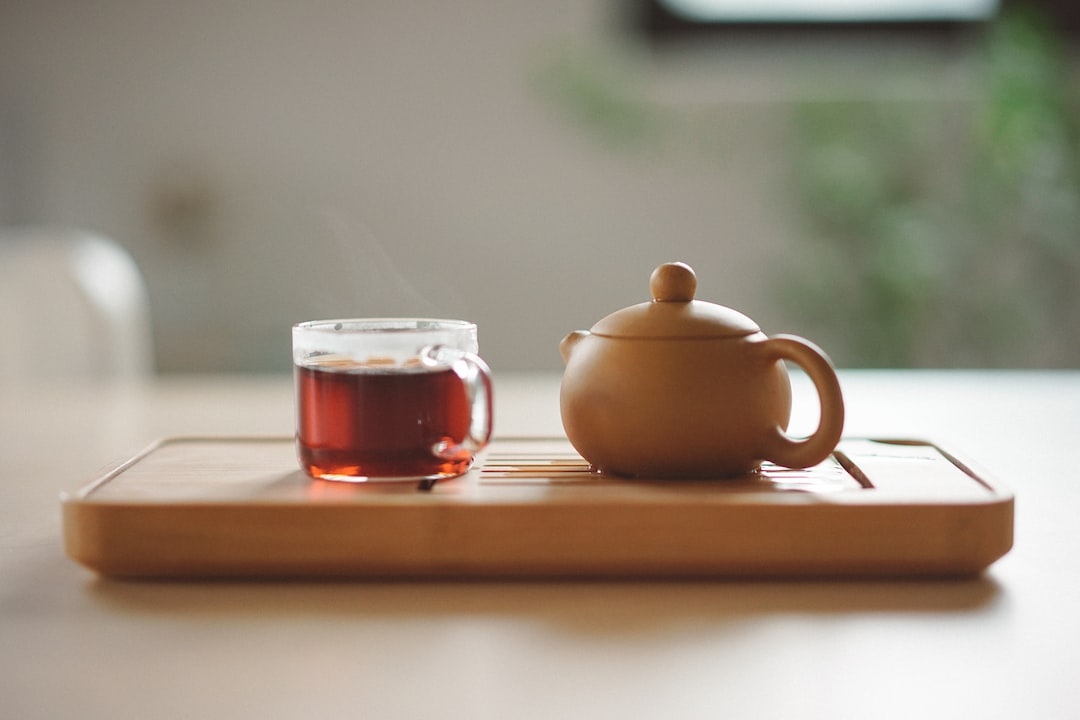Discover the Health Benefits of Matcha Tea: The Japanese Superfood
Matcha tea is a type of green tea that is highly regarded in Japanese culture for its health benefits and unique flavor. This superfood is made from finely ground green tea leaves that are grown in the shade, which increases their chlorophyll content and gives the tea its vibrant green color.
History of Matcha Tea
Matcha tea has been an essential part of Japanese culture for centuries and is a symbol of their hospitality. It was originally used in traditional tea ceremonies, where it was prepared and served to guests to promote mindfulness and relaxation.
How Matcha Tea is Made
The process of making matcha tea involves several steps. First, the tea leaves are grown in the shade to increase their chlorophyll content. Then, they are harvested, steamed, dried, and ground into a fine powder using a stone mill.
Flavor Profile of Matcha Tea
Matcha tea has a slightly bitter, earthy taste that is unique to green teas. Its vibrant green color adds a pop of color to any drink or dish it is incorporated into.
Health Benefits of Matcha Tea
Matcha tea is packed with antioxidants, which can help protect your body against damage from free radicals and oxidative stress. It is also rich in caffeine and L-theanine, an amino acid that can promote relaxation and improve focus and concentration. Additionally, some studies have suggested that matcha tea may have benefits for weight loss, heart health, and brain function.
Antioxidants
The high concentration of antioxidants in matcha tea makes it a powerful tool for promoting overall health. Antioxidants help to neutralize free radicals in the body, which can cause cell damage and inflammation.
Caffeine and L-theanine
The combination of caffeine and L-theanine in matcha tea makes it an ideal drink for promoting relaxation while also improving focus and concentration. The caffeine provides a boost of energy, while the L-theanine helps to calm the mind and reduce stress.
Weight Loss
Matcha tea has been shown to increase metabolism and burn fat, making it a great addition to any weight loss program. It also contains catechins, a type of antioxidant that can help to reduce body weight and body fat.
Heart Health
Studies have suggested that drinking matcha tea may help to lower cholesterol levels and reduce the risk of heart disease. This is due to the high levels of catechins and other compounds found in the tea that can help to improve cardiovascular health.
Brain Function
Matcha tea has been shown to improve brain function and reduce the risk of cognitive decline as we age. This is due to the high levels of antioxidants and L-theanine found in the tea, which can help to protect the brain from damage and improve cognitive performance.
In Conclusion
Matcha tea is a delicious and healthy drink that has been enjoyed for centuries in Japanese culture. It is packed with antioxidants, caffeine, and L-theanine, making it a powerful tool for promoting overall health and wellness. Whether you enjoy it in a traditional tea ceremony or as a latte, matcha tea is an excellent addition to any diet.
How to Choose High Quality Matcha Tea
Matcha tea has been gaining popularity in recent years due to its many health benefits and unique taste. However, not all matcha tea is created equal. To ensure you are getting the best quality matcha tea, here are some factors to consider:
1. Start with reputable sources
When searching for matcha tea, it’s important to start with trusted online retailers that specialize in matcha tea. Look for retailers that have positive reviews and customer feedback to ensure that the product you are purchasing is of high quality.
2. Check the origin
Matcha tea is traditionally grown in Japan, so make sure the product you are purchasing is sourced from there. Some retailers may sell matcha from other countries, but be cautious as the taste and quality may differ.
3. Look for ceremonial grade
Matcha tea is graded based on its quality, with ceremonial grade being the highest. This grade is made from the youngest, most tender leaves that are hand-picked and stone-ground to a fine powder. This grade is best for drinking, while lower grades are used for cooking or blending.
4. Check for freshness
Matcha tea is best consumed within 6 months of being harvested and ground. Look for retailers that provide a harvest date or expiration date on their packaging to ensure you are getting fresh matcha tea.

5. Price
High quality matcha tea can be quite expensive, but don’t be swayed by low prices. Cheap matcha tea may be lower grade or of poor quality. It’s worth investing in high quality matcha tea for the best taste and health benefits.
6. Packaging
Matcha tea should be stored in an airtight container to prevent oxidation and maintain freshness. Look for retailers that package their matcha tea in a way that protects it from light, air, and moisture.
7. Organic
Some retailers offer organic matcha tea, which means it is grown without the use of harmful pesticides or chemicals. This may be a preferable option for those who prioritize sustainability and health.
By considering these factors, you can ensure that you are purchasing high quality matcha tea that is fresh, delicious, and beneficial to your health.
The Ultimate Guide to Preparing Matcha Tea
Matcha tea is a popular Japanese beverage that has taken the world by storm. Made from finely ground green tea leaves, matcha tea has a bright green color and a slightly bitter, grassy taste. But how do you prepare this tea to ensure the best taste and experience? In this ultimate guide, we’ll show you everything you need to know about preparing matcha tea.
The Tools You’ll Need
Before you start making matcha tea, you’ll need to gather a few specialized tools. These include:
- A bamboo whisk (chasen)
- A bamboo scoop (chashaku)
- A bowl (chawan)
These tools are essential for preparing matcha tea as they help to whisk the tea into a frothy texture, which enhances the flavor and experience.
Preparing Matcha Tea
Now that you have your tools ready, it’s time to prepare the matcha tea. Follow these steps:
- Warm up the bowl by pouring some hot water into it and swirling it around. Then discard the water.
- Use the bamboo scoop to measure out about 1-2 teaspoons of matcha powder and sift it into the bowl to remove any clumps.
- Pour in a small amount of hot water (about 2 ounces) that is around 175F (80C) and whisk vigorously in a zigzag motion until the tea is frothy and smooth.
- Drink the tea immediately, using the bamboo whisk to mix and froth the tea as you drink.
It’s important to note that matcha tea should be consumed immediately after preparation to ensure the best taste and experience.
Variations of Matcha Tea
If you’re looking to switch up your matcha tea routine, there are a few variations you can try:
- Adding milk or sweetener to your matcha tea
- Creating a matcha latte by frothing milk and matcha powder together
These variations can add a unique twist to your matcha tea and make it even more enjoyable.
Types of Matcha Tea
There are different grades of matcha tea available, with ceremonial grade being the highest quality and culinary grade being more suitable for cooking and baking.
| Grade | Description |
|---|---|
| Ceremonial | High quality, made from the youngest tea leaves and has a sweeter taste |
| Premium | High quality, made from slightly older tea leaves and has a slightly bitter taste |
| Culinary | Lower quality, made from older tea leaves and is more suitable for cooking and baking |
When purchasing matcha tea, be sure to look for high-quality ceremonial or premium grade matcha to ensure the best taste and experience.
Conclusion
Matcha tea is a delicious and healthy beverage that can be enjoyed in many different ways. By following these steps and using high-quality matcha tea, you’ll be able to prepare the perfect cup of matcha tea every time.
Matcha Tea: A Versatile Ingredient for Creative Culinary Adventures
Matcha tea has been a popular beverage in Japan for centuries, and it’s gaining popularity worldwide due to its unique taste and numerous health benefits. But did you know that matcha tea is also a versatile ingredient that can add a fun and creative twist to your culinary adventures?
Matcha Tea Recipes
From drinks to desserts to savory dishes, matcha tea can be used in various recipes. Some popular options include:
- Matcha Lattes
- Matcha Smoothies
- Matcha Ice Cream
- Matcha Cookies
- Matcha Cakes
- Matcha Pancakes
- Matcha-Infused Cocktails
- Matcha-Flavored Sauces
But don’t stop there! Matcha tea can also be used as a seasoning or garnish for savory dishes like salads, rice bowls, and grilled meats.
Choosing the Right Matcha Powder
When using matcha tea in recipes, it’s important to choose high-quality ceremonial grade matcha powder that is pure and free from additives or sweeteners. This ensures that you’re getting the full health benefits of matcha tea, as well as its unique flavor.
How to Balance the Flavor of Matcha Tea
Matcha tea can be a bit bitter and strong, so it’s usually best to use it in moderation and balance its flavor with other ingredients like milk, sugar, or fruit. This will help create a more well-rounded and enjoyable flavor profile.
Resources for Matcha Tea Recipes
There are many online resources and cookbooks that offer creative and delicious matcha tea recipes for all tastes and dietary needs, from vegan to gluten-free to paleo. So, don’t be afraid to experiment and try new things with matcha tea!
Overall, matcha tea is a versatile ingredient that can add a fun and creative twist to your culinary adventures. Whether you’re looking for a new drink to enjoy or a unique ingredient for your next recipe, matcha tea is definitely worth trying.


Leave a Reply